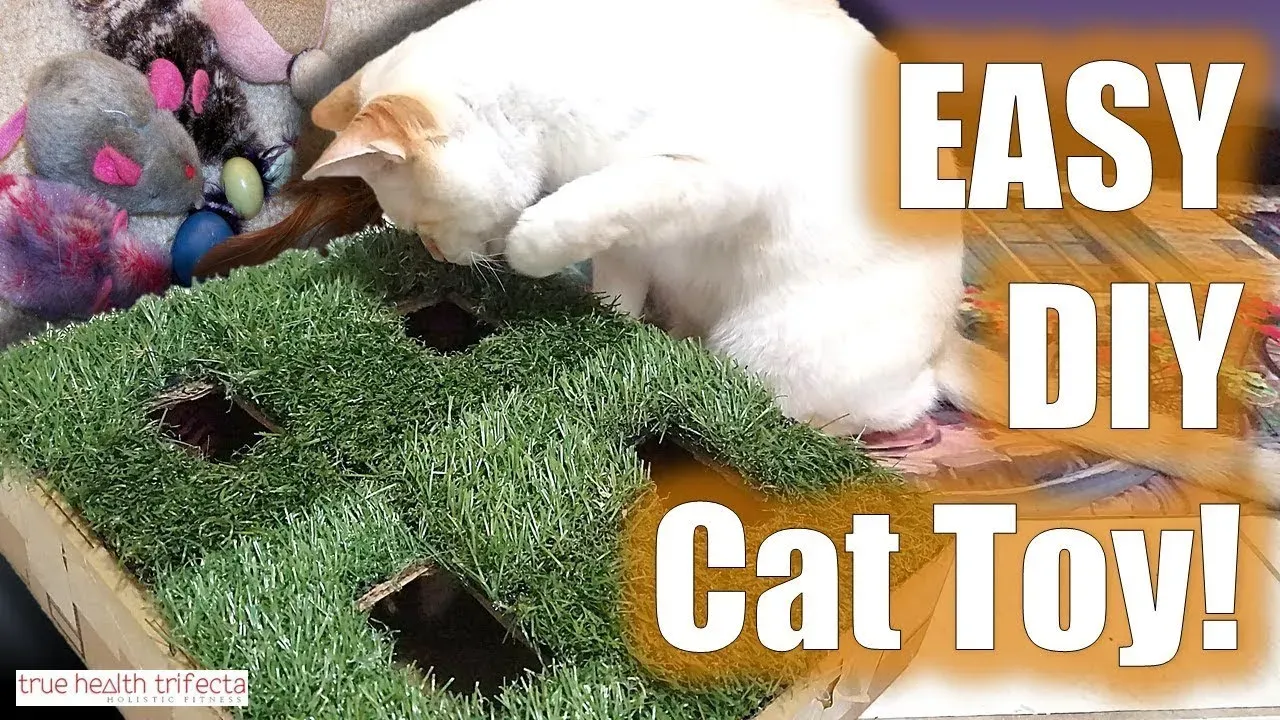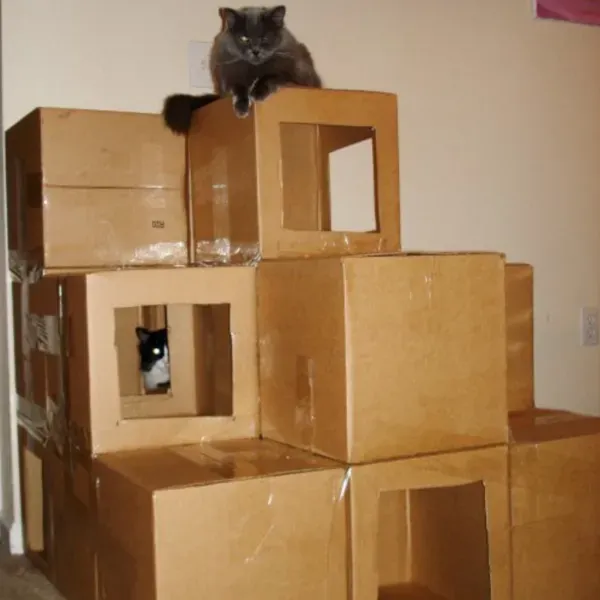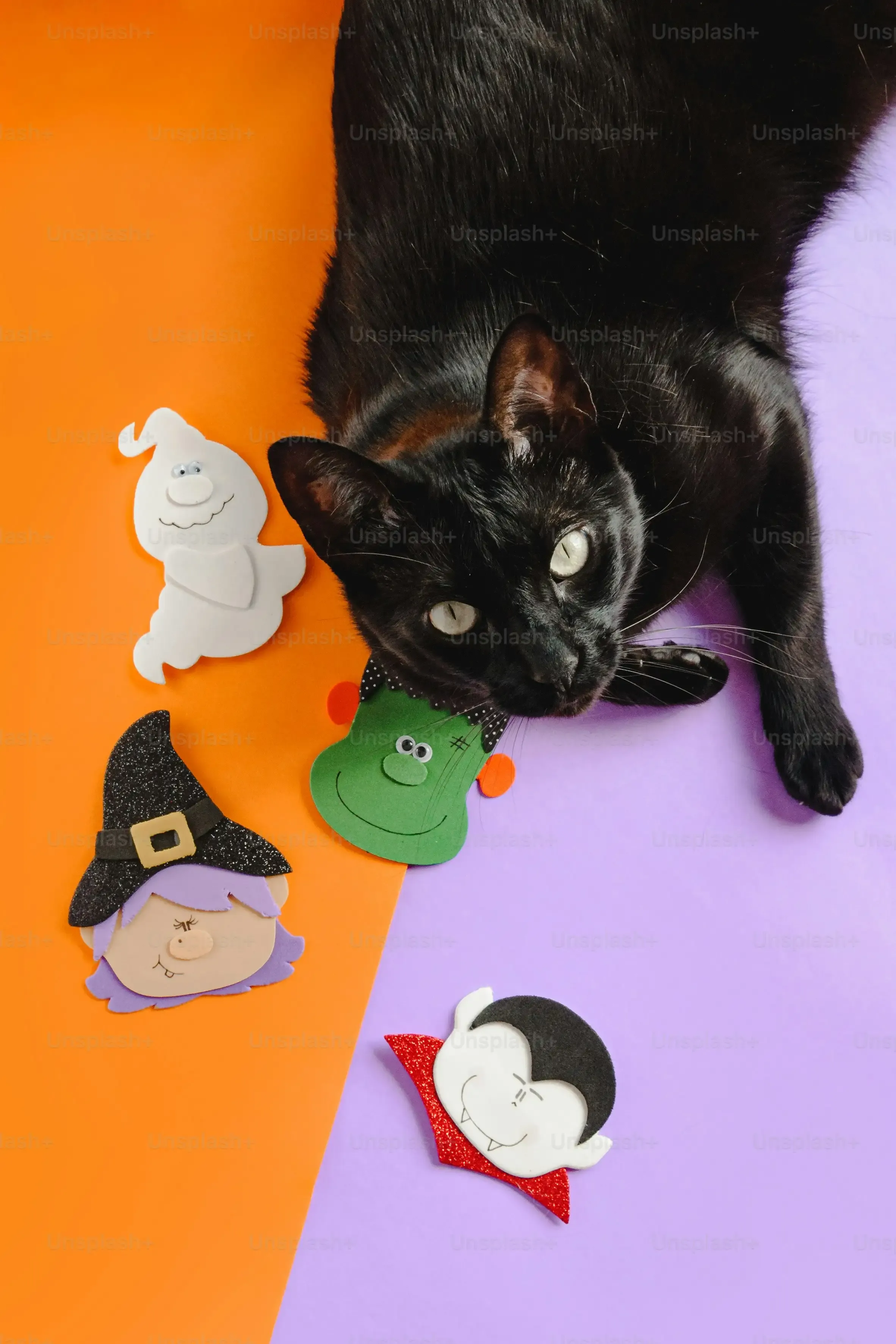Table of Contents
Does your feline friend treat your furniture like a personal climbing wall? Or perhaps they yawn theatrically at the expensive, store-bought toys gathering dust in the corner? Cats are predators at heart, hardwired with a powerful instinct to hunt, stalk, and pounce. When that instinct isn't given a healthy outlet indoors, boredom can lead to destructive behaviors or, just as bad, a lethargic kitty. The solution doesn't require a trip to the pet store or emptying your wallet. You can easily create engaging, effective diy cat hunting toys right at home.
Why Your Cat Needs to "Hunt" Indoors

Why Your Cat Needs to "Hunt" Indoors
They're Not Just Fluffy Roommates, They're Predators
Look at that creature curled up on your favorite blanket, purring away. Seems pretty chill, right? Don't let the napping fool you. Underneath that soft fur and casual demeanor lies a finely tuned hunting machine. Your cat, whether a pampered purebred or a scrappy rescue, shares the same genetic blueprint as their wild ancestors. That means they're hardwired to stalk, chase, pounce, and "kill" prey. This isn't just some cute quirk; it's a fundamental behavioral need. Keeping them indoors keeps them safe from cars, predators, and diseases, which is great. But it also removes their natural hunting ground. This is where simulating the hunt becomes crucial.
Boredom is a Pathway to Destruction (and Unhappiness)
What happens when a creature built to hunt doesn't get to? Think about it. All that energy, all those instincts, bottled up with nowhere to go. This is often the root cause of behaviors we find frustrating: scratching furniture, aggressive play, excessive meowing, or even anxiety and overgrooming. A bored cat is usually a stressed cat, and a stressed cat is rarely a well-behaved one. Providing outlets for their hunting drive isn't just about fun; it's about preventing behavioral problems and ensuring their psychological well-being. It keeps their minds sharp and their bodies active, preventing both mental and physical stagnation. It's less about giving them a toy and more about giving them a job.
- Signs Your Cat Might Be Bored or Lacking Mental Stimulation:
- Excessive sleeping (beyond the usual cat nap marathon)
- Overeating or lack of interest in food
- Destructive scratching or chewing
- Aggression towards people or other pets
- Excessive vocalization (the "I'm bored!" meows)
- Chasing or attacking things that aren't toys (like your ankles)
- Compulsive behaviors (like overgrooming)
Simple DIY Cat Hunting Toys You Can Make Today

Simple DIY Cat Hunting Toys You Can Make Today
The Humble Cardboard Tube Conqueror
Alright, let's get real. You don't need a workshop full of power tools or a degree in engineering to make something your cat will actually play with. Sometimes, the best toys are the ones you already have lying around. Take that empty paper towel or toilet paper roll. It's practically begging to be a cat toy. Cut a few small holes around the sides – big enough for a treat to fall out, but small enough that it requires some effort. Fold in the ends to seal it up. Toss a few kibbles or tiny treats inside. Boom. Instant hunting puzzle. Your cat has to bat it around, chase it, and figure out how to make the goodies escape. It taps directly into their instinct to manipulate objects to get to "prey." It's cheap, effective, and uses stuff you'd otherwise trash. Low effort, high reward, which frankly, is my kind of DIY.
Sock and String Shenanigans
Another classic, because it works. Grab an old sock that's lost its mate (we all have them). Stuff it with something crinkly – maybe a plastic bag (supervised play is key here!) or some dried beans for noise (seal it tight!). You can add a pinch of catnip if you want to go for the gold. Tie the end off securely. Attach a sturdy string or piece of twine to it. Now you have a lure. Drag it along the floor, hide it behind furniture, make it wiggle like a mouse. This mimics the erratic movement of prey, triggering their chase instinct. The best part? You're the one controlling the "prey," making it an interactive game that builds your bond. Just remember to put the string toy away when you're not actively playing to avoid any unsupervised chewing mishaps.
- Easy DIY Toy Materials You Likely Have:
- Empty paper towel or toilet paper rolls
- Old socks
- Sturdy string or twine (natural fibers are safer)
- Cardboard boxes (various sizes)
- Plastic bottle caps or milk jug rings (check for small parts)
- Newspaper or packing paper (for crinkling)
- Small treats or kibble
The Almighty Cardboard Box Ambush
Cats and boxes. It's a tale as old as time, or at least as old as cardboard. But you can turn a simple box into a hunting ground. Cut various sized holes in the sides and top – big enough for a paw to fit through, maybe a bit bigger for a head. Toss some toys or treats inside. Your cat now has to reach in, strategize, and work to get the items out. It's a basic foraging and hunting simulation. You can connect multiple boxes to create a tunnel system or a multi-level hunting structure. It doesn't have to be pretty; your cat cares zero about aesthetics. They care about the challenge and the payoff. Plus, watching them stick their head into a box opening is inherently hilarious. These simple diy cat hunting toys prove you don't need fancy gadgets; sometimes, the most effective tools are the ones already in your recycling bin.
Leveling Up: Crafting Puzzle Feeders & Complex DIY Cat Hunting Toys

Leveling Up: Crafting Puzzle Feeders & Complex DIY Cat Hunting Toys
Turning Mealtime into a Mind Game
so you've mastered the basic cardboard tube and sock lure. Your cat might be momentarily amused, but let's be honest, they're smart little beasts. They'll figure out the simple stuff fast. To keep things interesting and provide serious mental heavy lifting, it's time to graduate to puzzle feeders and more intricate diy cat hunting toys. These aren't just about batting something around; they force your cat to problem-solve, strategize, and work for their reward, much like they would in the wild. It turns feeding from a passive bowl experience into an active foraging mission. This kind of enrichment is gold for preventing boredom-related behaviors and keeping their brains firing on all cylinders.
Building the Cardboard Tube Maze
One excellent way to step up your DIY game is to create a "foraging board" or "puzzle box." Grab a shallow cardboard box – a shoebox lid or a small delivery box works well. Collect a bunch of empty toilet paper or paper towel tubes. Cut some of the tubes to different heights. Glue or securely tape these tubes upright inside the box, arranging them in a dense pattern. Make sure they're secure enough they won't tip over easily. Sprinkle kibble or treats among the tubes. Your cat now has to use their paws and nose to figure out how to extract the food from between and inside the tubes. It's a simple concept but provides a satisfying challenge, tapping into their natural inclination to manipulate objects to get food.
DIY Puzzle Feeder Idea | Materials Needed | Skill Level |
|---|---|---|
Cardboard Tube Maze | Shallow box, toilet paper/paper towel tubes, glue/tape, kibble/treats | Easy-Medium |
Bottle Spinner | Plastic bottle, skewer/dowel, sturdy stand (cardboard/wood), rubber bands, drill/hole punch, kibble/treats | Medium |
Muffin Tin Forager | Muffin tin, ping pong balls/crinkle balls, kibble/treats | Super Easy |
The Spinning Bottle Challenge
For a slightly more dynamic challenge, consider the spinning bottle feeder. You'll need a clean plastic bottle (like a water bottle), a skewer or thin dowel rod, and something to act as a stand. Puncture small holes around the sides of the bottle – again, big enough for kibble to fall out, but small enough to require effort. Thread the skewer through the bottle horizontally. Create a simple stand by cutting notches in two pieces of sturdy cardboard or wood, allowing the skewer (and thus the bottle) to rest and spin freely between them. Secure the skewer ends with rubber bands or tape so the bottle stays centered. Fill the bottle with kibble and place it on the stand. Your cat has to bat the bottle to make it spin and release the food. It's a step up in complexity from static puzzles and provides great physical and mental engagement.
Safety First: Tips for Using Your DIY Cat Hunting Toys

Safety First: Tips for Using Your DIY Cat Hunting Toys
Always Supervise Playtime
so you've crafted some truly epic diy cat hunting toys. You've got the cardboard tube maze, the spinning bottle, maybe even the sock monster. Your cat is going wild, batting, pouncing, and looking happier than you've seen them in ages. This is great! But don't just set it down and walk away to binge-watch reality TV. Just like you wouldn't leave a toddler unsupervised with tiny Lego bricks, you need to keep an eye on your cat, especially with homemade toys. They can chew off small pieces, ingest string, or get tangled. A five-minute supervised play session is infinitely better than leaving a potentially hazardous toy out all day. Stay present, interact with them, and make sure their hunting fun doesn't turn into a vet visit.
Choose Your Materials Wisely
When you're scavenging your recycling bin or junk drawer for supplies, a little common sense goes a long way. Avoid anything with small parts that can easily break off and be swallowed – think tiny plastic bits, beads, or flimsy embellishments. Steer clear of anything toxic, like certain glues, paints, or treated fabrics. If you're using string or yarn, make sure it's sturdy and always put string toys away immediately after use. Cats can suffer serious intestinal damage from ingesting linear objects. Natural materials like plain cardboard, untreated wood, and cotton twine are generally safer bets. If you're unsure about a material, it's better to skip it. Your goal is enrichment, not an emergency.
- Materials to Be Cautious With or Avoid in DIY Cat Toys:
- Small plastic pieces or beads
- Loose strings, yarn, or ribbon (unless supervised)
- Rubber bands or hair ties
- Anything with sharp edges
- Toxic glues, paints, or markers
- Anything that can easily splinter
Inspect Toys Regularly and Know When to Retire Them
Your awesome diy cat hunting toys aren't built to last forever, and that's okay. Part of responsible pet ownership is regularly checking your cat's toys for wear and tear. Is the cardboard getting shredded to the point where pieces are coming off? Is the string fraying? Are the holes on the puzzle feeder getting too big, making it less of a challenge and more of a gulp-fest? Look for any signs of damage that could turn the toy into a hazard. If a toy is showing significant wear, has loose parts, or is no longer structurally sound, it's time for it to go. Don't feel bad; think of it as making room for the next brilliant DIY creation you'll whip up.
Happy Hunting Grounds: Wrapping Up Your DIY Toy Adventures
So there you have it. Giving your cat opportunities to engage their natural hunting instincts isn't some fluffy pet trend; it's a fundamental need for their well-being. Those expensive, blinking contraptions from the store often gather dust because they don't truly mimic the challenge and reward of a real hunt. By crafting your own diy cat hunting toys, you provide tailored stimulation, turn discarded items into treasures, and strengthen the bond you share through interactive play. It takes minimal effort and cost, but the payoff in a happier, more engaged feline companion is substantial. Ditch the guilt over ignored store-bought toys and embrace the satisfying simplicity of a homemade hunt. Your cat (and probably your furniture) will thank you.